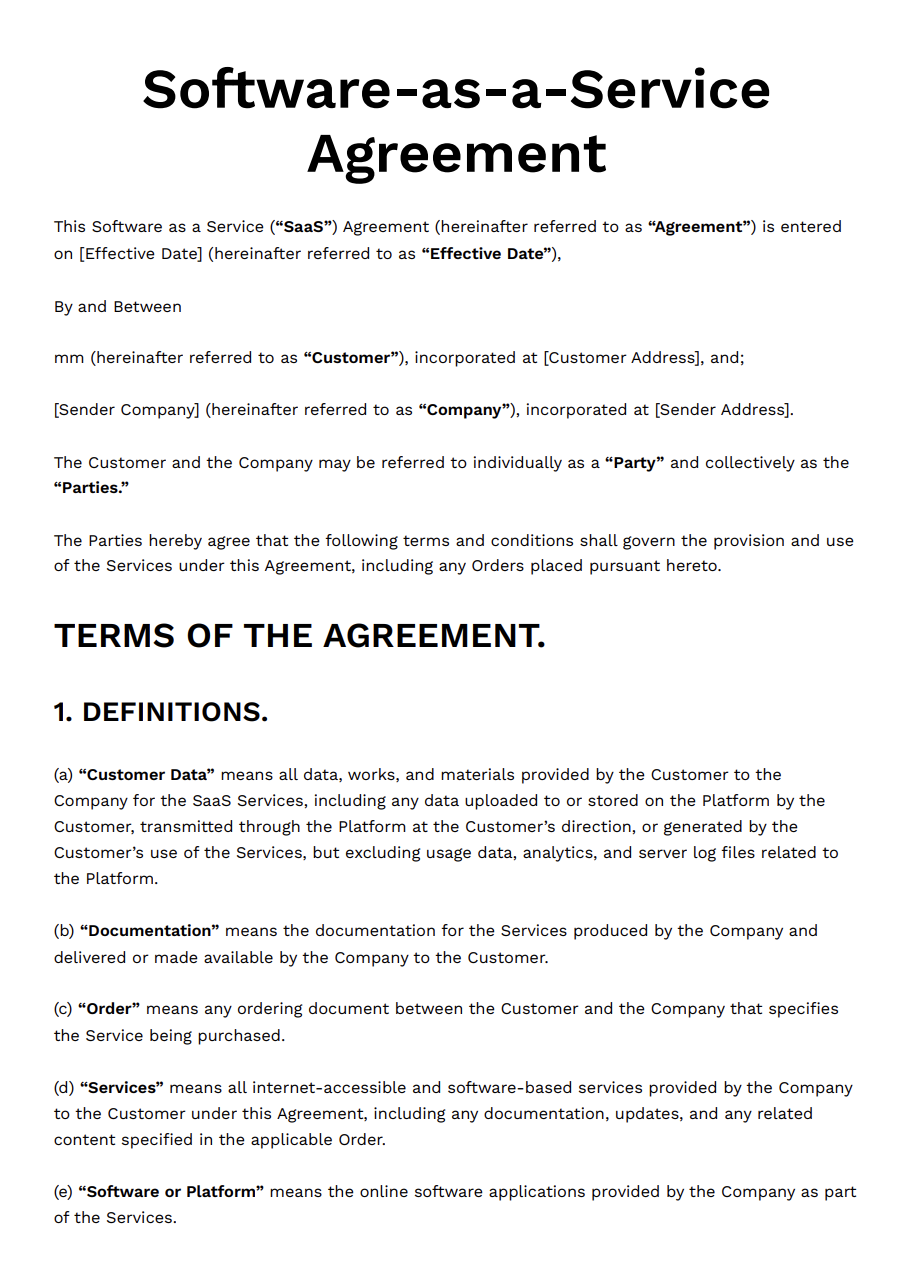Why SaaS Agreements Require a Specified Currency

Table of Contents
- The Importance of Specifying Currency in Contracts
- ISO 4217 Currency Codes: A Universal Standard
- Practical Impacts of Omitting Currency Details
- Recommended Contract Clauses for Currency
- Formatting Best Practices in SaaS Contracts
- Legal and Financial Precedents Supporting Currency Specification
- FAQs
- Conclusion
Many early stage SaaS founders and legal teams assume writing $5,000 is enough. But with international clients and payments, this ambiguity opens the door to confusion or even litigation.
Currency, although seemingly minor, can drastically affect the contract's enforceability and practical execution.
The Importance of Specifying Currency in Contracts
1.Legal Certainty in International Deals
Specifying currency ensures that both parties clearly understand the payment obligations, especially in cross-border contracts. Without a declared currency, questions arise: Is "$5,000" in USD, CAD, or AUD?
For example: "$5,000" in US Dollars vs. New Zealand Dollars can differ by 40% or more in actual value.
2.Avoiding Currency Symbol Confusion
Many currencies share the same symbols:
$– used by USD, CAD, AUD, NZD, and more¥– used by both JPY and CNY
Using ISO 4217 codes like USD, EUR, JPY eliminates any room for misinterpretation.
3.Eliminating Exchange Rate Disputes
If a customer in Europe sees a bill for "$1,000" and assumes it’s EUR, not USD, the actual payable amount can vary by hundreds of dollars.
A well defined clause prevents disagreements and potential legal claims.
ISO 4217 Currency Codes: A Universal Standard
The ISO 4217 standard defines three-letter codes for currencies used worldwide.
These codes are universally recognized by financial institutions, payment processors, and governments.
Examples of Common Codes in SaaS Contracts
| Currency | Symbol | ISO Code |
|---|---|---|
| US Dollar | $ | USD |
| Euro | € | EUR |
| British Pound | £ | GBP |
| Indian Rupee | ₹ | INR |
| Japanese Yen | ¥ | JPY |
These should be used in contract clauses like:
The Customer agrees to pay a fee of USD 5,000 upon signing.
Practical Impacts of Omitting Currency Details
Case Studies of Contractual Confusion
- Case 1: A SaaS company billed $2,000 to a Canadian client. The client assumed CAD, paid less than expected, leading to a month-long revenue shortfall.
- Case 2: An EU-based customer disputed a renewal charge listed as "$300", claiming it was EUR, not USD. The case required mediation and strained the client relationship.
How It Affects Payments and Accounting
Clear currency notation ensures:
- Accurate invoicing and tax reporting
- Smooth payment processing
- Harmonization with accounting systems and ERP tools
Recommended Contract Clauses for Currency
“All Fees Shall Be Paid In...” Clause Explained
Adding a general clause is both efficient and professional:
All fees shall be paid in USD.
This avoids the need to repeat "USD" for every line item and ensures coverage for indirect amounts like penalties, add-ons, or future pricing changes.
Currency Conversion and Fluctuation Clauses
When pricing in a local currency or accepting foreign payments, include:
All currency conversions shall be based on the exchange rate published by the European Central Bank on the invoice date.
Formatting Best Practices in SaaS Contracts
How to Present Amounts Clearly (USD 5,000)
Best format: Currency Code + Amount
Example: USD 1,000
More formal versions may include:
USD 1,000 (One Thousand U.S. Dollars)
Global Readability and Localization Tips
To accommodate clients in different regions:
- Mention: “All fees stated are in United States Dollars (“USD”) unless specified otherwise.”
- Avoid localized terms like "grand" or "bucks".
Legal and Financial Precedents Supporting Currency Specification
Judicial Interpretations of Unclear Currency
Courts have historically sided with the party that had less clarity or disadvantage in cases involving ambiguous payment terms. Stating currency eliminates such grey areas.
Accounting Compliance Requirements
For GAAP and IFRS compliance, revenue must be recognized based on clearly stated terms—including currency. Unclear terms may trigger audit issues.
FAQs
1. Do I need to specify currency if I only sell in one country?
Yes. Even in single-country scenarios, customers may misinterpret symbols or values, especially in border regions or when selling online.
2. Can I just use "$" instead of "USD"?
No. "$" can refer to multiple currencies. Always use "USD" for clarity, especially in international or multi-currency settings.
3. Where should I put the currency clause in the contract?
Include it in the Fees and Payment section, or add a standalone Currency clause.
4. Do payment platforms handle currency automatically?
No. While they detect currencies based on locale or settings, legal contracts must define currency to avoid billing disputes.
5. What happens if I don’t specify the currency in the contract?
You risk payment confusion, exchange rate disagreements, and even legal liability, especially if billing high-value services.
Conclusion
Specifying currency in SaaS agreements isn’t just about accounting, it's about building trust, ensuring legal clarity, and providing a seamless customer experience.
Whether you’re a solo SaaS founder or a legal counsel for a SaaS giant, including a clear currency clause like “All fees shall be paid in USD” will save you countless headaches down the road.
